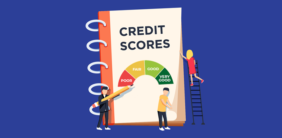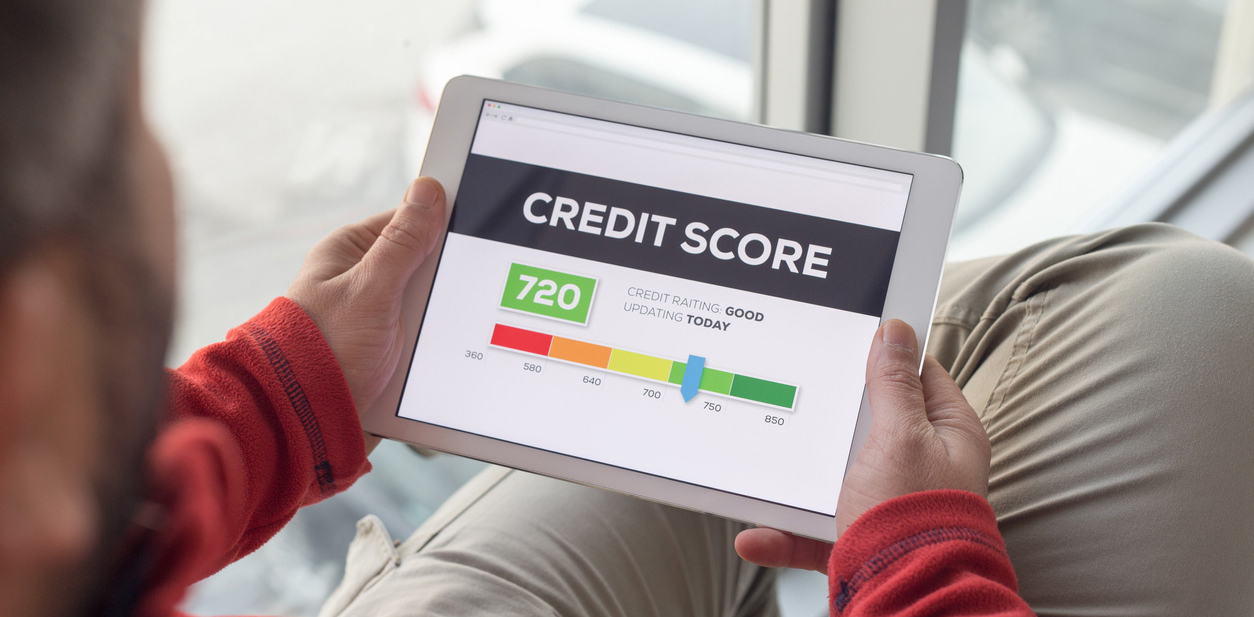Understanding car loan amortization can save you money and help you pay off your loan faster.
When you take out a new car loan or refinance an existing one, you agree to pay it off over a period of time. Each month, you make out a check or fill in an online form and — boom! — your loan’s balance decreases until it hits zero.
But do you know how much of each payment goes toward the loan principal, and how much is used to pay down the interest? It’s not an even split.
To complicate things, how much of each payment goes toward either the loan principal or balance changes over time in a process called amortization.
Understanding auto loan amortization can help you learn how your loan functions, where your money goes, and how you can pay off your loan faster.
What Is an Amortized Loan?
Your car loan is made up of two parts: the loan’s principal and its interest. The principal is the total amount you borrowed and promised to pay back. Interest is the amount you pay in exchange for borrowing the money. Together, the principal and interest make up your total loan balance.
As a responsible borrower, your monthly loan payments go toward paying down the loan’s total balance in a process called amortization. Amortization dictates how much of each payment goes toward either the principal or interest of your loan — and how long it’ll take you to pay off your loan in full.
The result is an amortized loan, which means your loan will be paid off through a series of monthly installments over a specified length of time.
Are car loans amortized?
Auto loans are a type of amortized loan in which the borrower is responsible for paying back the total loan amount over a series of installments.
Mortgages and student loans are also examples of amortized loans because they’re one-time loans. Revolving credit, like a credit card, is not amortized.
How Is a Car Loan Amortized?
Interest accumulated on a car loan is considered simple interest, which means the amount of interest is based only on the loan’s principal balance at the time of calculation.
The opposite of simple interest is compound interest, in which interest is accrued based on how much of the total loan balance — principal and interest — you still owe.
Since car loans accrue simple interest, only the principal is taken into account when calculating your interest payment.
Despite that, some lenders will calculate something called precomputed interest when you first take out a loan. When this happens, your loan’s entire interest is accumulated at the start of the loan’s term. With this type of loan, there’s no way to “skip” interest payments or pay less in interest charges — the lender expects to be paid the full amount of interest as determined by your loan contract, even if you pay off the loan early.
Car loans are considered “front-loaded” because of the way interest is paid down over the length of the loan. Payments made toward a newer loan direct more money toward the interest. As the term goes on, less and less money goes toward interest, and more goes toward paying down the loan balance.
How Amortization Works
Imagine you recently refinanced a car loan with a $20,000 balance, a 48-month term, and a 4% annual interest rate. Over the next four years, you’ll be responsible for paying back a principal of $20,000 and a total interest of $1,676 with a monthly payment of $451.58.
However, because car loans are amortized and front-loaded, not all of your $451.58 payment will go toward the principal. In fact, your payment isn’t even split evenly between principal and interest.
In the first month, $67 would go toward your loan’s interest. The remaining $385 would pay down the principal. In your loan’s second month, $65 would go toward interest and your principal would be reduced by $387.
Sample Car Loan Amortization Schedule
Below is a sample abbreviated breakdown of interest vs. principal paid on a car loan over the four-year payment period.
- Principal loan balance: $20,000
- Interest rate: 4%
- Loan term: 48 months
- Monthly payment: $451.58
| Month |
Interest |
Principal |
Balance |
| 1 |
$67 |
$385 |
$19,615 |
| 12 |
$52 |
$399 |
$15,295 |
| 24 |
$36 |
$416 |
$10,399 |
| 36 |
$19 |
$432 |
$5,303 |
| 48 |
$2 |
$450 |
$0 |
As you continue to pay, the ratio changes, with a larger proportion going toward the principal each month. This continues until your loan is paid off in full.
This pattern can be tracked on and is represented by an amortization schedule or table.
Car loan amortization schedules
An amortization schedule is a visual representation that shows how much of each installment payment goes toward interest, and how much pays down the principal.
Additionally, you may see a calculation of total annual payments made to both the loan principal and interest. In each subsequent year, the total amount paid toward interest will drop as payments made toward the principal increase.
Before taking out a loan, you can use an amortization calculator to get an idea as to what your amortization schedule will look like. Tweak the values to determine what your payments and interest would look like with a longer term or lower monthly payment.
You can use an amortization schedule to compare loans from different lenders, figure out when it makes sense to refinance or trade in a vehicle, or determine what you need to do to pay off your loan early.
What Factors Impact Auto Loan Amortization?
Factors that affect the amortization of your car loan largely involve methods of managing your loan’s interest. Since so much of amortization has to do with interest, anything that reduces your total loan balance is likely to benefit you (and your bank account).
Total amount borrowed
Your loan’s principal is made up of how much money you need to borrow to finance a vehicle purchase, plus any bells and whistles (such as fees, taxes, and additional products like GAP waivers and vehicle service contracts). Your loan’s total interest is then calculated based on how much you borrow.
You can reduce the original loan amount by:
Interest rate
High interest rates correspond to more interest paid over the life of a loan. Similarly, a lower rate means you’ll pay less in interest.
To illustrate that, recall the earlier example of a $20,000 car loan at a 4% interest rate and a 48-month term. In this scenario, you would pay $1,676 of total interest over the loan term.
According to the amortization schedule for such a loan, this is how much interest you would pay each year of your loan term.
| Year |
Interest Paid on Car Loan |
| 1 |
$714 |
| 2 |
$523 |
| 3 |
$323 |
| 4 |
$116 |
However, if your interest rate were instead 5.5%, you would pay a total of $2,326 in interest over the same amount of time, or $650 more than taking out a loan with a 4% interest rate.
In this case, your amortized schedule would show you paying the following in interest.
| Year |
Interest Paid on Car Loan |
| 1 |
$985 |
| 2 |
$726 |
| 3 |
$452 |
| 4 |
$163 |
Strive for a low interest rate by improving your creditworthiness and credit score, reducing your debt, and avoiding a high loan-to-value ratio. Refinancing may also be an option for lowering your interest rate, particularly if you’ve improved your credit since you took out the original loan.
Loan term
Long loan terms can be appealing because they often correspond to lower monthly car payments. Unfortunately, longer loan terms can sometimes be an example of a “penny wise, dollar foolish” mentality. Though you may save money upfront, you’re likely to pay more overall through additional interest.
As has been established, a $20,000 loan with a 4% interest rate over a 48-month term results in $1,676 of total interest. The same principal balance and interest rate over 60 months means you’ll pay $2,100 in interest. With a 72-month term, interest would increase to $2,529.
On the flip side, a 36-month loan term would reduce the total interest paid to $1,257.
Shortening or lengthening a loan term impacts when your loan amortizes, how soon you’ll pay down the interest, and how quickly you build equity in your vehicle.
Can I Pay Off an Amortized Car Loan Early?
An effective means of paying off a loan early is to make payments beyond your obligatory monthly payment. These principal payments go pay down the principal and reduce how long you’ve got left before your loan is paid off.
Paying off a car loan with precomputed interest
When you take out a loan with precomputed interest — also called a precomputed loan — interest is calculated at the time you take it out and must be paid in full.
This is all well and good if you never plan on making extra payments. In that situation, precomputed interest is treated more-or-less the same as simple interest, and will follow along the path reflected by your amortization schedule.
If you do plan or hope to make an extra payment on a loan with precomputed interest, your loan’s lender may apply the additional payment to the remaining interest of your loan and not the principal amount.
Even lenders who don’t use precomputed interest may first apply portions of an extra payment to interest accrued since the last installment. If any money is left over, only then will it go toward the principal.
This gives you the opportunity to stay ahead of payments and make a slight dent in your loan balance, but you’re still not getting as much bang for your buck.
Can I be penalized for paying off my car loan early?
Before signing a contract or loan agreement, pay special attention to both it and the Truth in Lending Act (TILA) disclosure given to you by any potential lender. Some lenders may charge you a prepayment penalty for paying off a loan earlier than agreed upon.
If you’re not penalized for making an early or additional principal payment, you’re all well and dandy — go ahead and get that loan paid off ASAP.
If your lender doesn’t allow principal payments to be made or charges a prepayment penalty, shop around and consider refinancing to find a more agreeable loan.
How to Calculate Your Auto Loan Amortization
Though calculators, spreadsheets, and tables are useful, a simple math formula can help you approximate your loan’s amortization.
Car Loan Amortization Formula
- Multiply your loan’s interest rate by your outstanding loan balance.
- Divide by 12.
The solution to the equation is how much interest you’ve paid in a single month.
The difference between it and your total monthly payment is the amount you’ve paid toward the principal.
In practice, consider the example from earlier:
How to Calculate Interest Paid on a Car Loan
- Original balance: $21,676 ($20,000 principal and $1,676 interest)
- Interest rate: 4% interest rate
- Loan term: 48 months
After nine monthly payments, your remaining balance becomes $16,093.
To determine how much of your monthly payment has gone to interest:
- Multiply your interest rate (4% becomes .04) by your outstanding loan balance (16093): .04*16093 = 643.72
- Divide by 12: 643.72/12 = 53.64
Following this formula, the approximate monthly payment amount that’s gone toward interest is $53.64. As your outstanding balance decreases, so, too, will the proportion of your payment that pays down the interest:
(.04*10399)/12 = 34.66 or $34.66
This formula can come in handy whenever you don’t have access to an amortization table or spreadsheet, but want to know where you stand on paying down your loan.
When Financing a Car Purchase, Use Amortization to Your Advantage
Car loan amortization can influence and positively impact your finances. Understanding how much of your money goes toward the two aspects of a loan balance gives you control over the loan itself.
With proper planning and tools such as amortization schedules, tables, and spreadsheets (or old-school math), you can pay off your loan faster, spend less money overall in interest, and determine if and when it makes sense to refinance for a better loan.
;)












